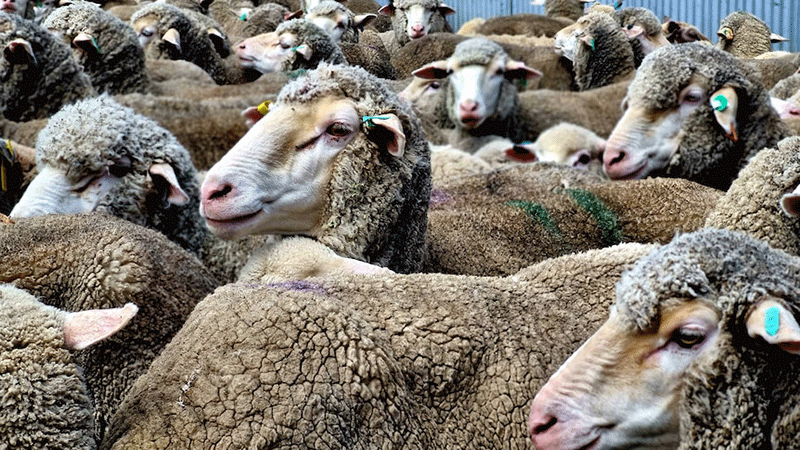 |
A sheep in the UK has tested positive for H5N1 bird flu for the first time. File photo. (ABC Rural: Lara Webster) |
World’s first case of H5N1 bird flu found in UK sheep, sparking Australian biosecurity warning
(ABC) -- Scientists are calling for more federal government investment to safeguard Australia’s US$5 billion sheep industry, following the detection of a potentially devastating strand of bird flu in a ewe in England.
It is the first detection of the H5N1 avian flu variant in a sheep globally, although it has been detected in other mammals, including dairy cattle, cats, dogs, dolphins, seals and tigers.
Australia is the only continent that has remained entirely free of the H5N1 variety of bird flu, and farmers and scientists want the government to ramp up biosecurity measures to ensure the virus does not reach our shores.
The UK’s chief veterinary officer confirmed in a statement that the virus had been identified in a single ewe in Yorkshire following repeated positive milk testing.
“While this is the first time this virus has been reported in a sheep, it is not the first time influenza of avian origin has been detected in livestock in other countries,” Veterinary Officer Christine Middlemiss said.
“The infected sheep has been humanely culled to enable extensive testing.
“No further infection with avian influenza virus was detected in the remaining flock and this remains a single case in a mammal detected on the premises.
“There is no evidence to suggest an increased risk to the UK livestock population.”
University of Queensland virologist Kirsty Short said authorities needed to remain vigilant to protect Australia’s crucial livestock industry.
“Lots of things concern me about this virus — the fact it’s gotten so [effectively] into the US cattle herd, the fact that it’s in seals, carnivores,” she said.
“Every time this virus gets into a mammal we increase the risk of it adapting to mammalian populations and that has consequences for human health.”
Dr Short said there had been around 60 cases of human infections abroad in the past year, predominantly in the US, ranging from symptomless cases to a small number of deaths.
“We are incredibly fortunate that we don’t have this virus in Australia yet,” she said.
“We need to do more research about getting prepared for this virus, and one of the things I am particularly concerned about is our native species.
“If this virus becomes established in Australia we could lose a large number of native birds and potentially mammals as well.
“I think it is definitely worthwhile for the government to consider investing more into fundamentally understanding what this virus would do in Australia and what the landscape would look like.”
This comes as the Australian poultry industry recovers from outbreaks of H7 variants of avian influenza after losing more than 10 per cent of its laying hens.
The outbreaks have resulted in ongoing egg shortages across the country.
“In poultry, what this virus does is target the cells that line the blood vessels and this means that poultry essentially bleed out,” Dr Short said.
“It’s a very horrific way to die and they can die within 24 hours of contracting the virus, no bird should go through that.
“Any incursion of this virus, even if it’s just one poultry farm, is devastating -- from an economic perspective and devastating from an animal ethics perspective.”
The federal chief veterinary officer has been contacted for comment.
(Latest Update March 26, 2025) |